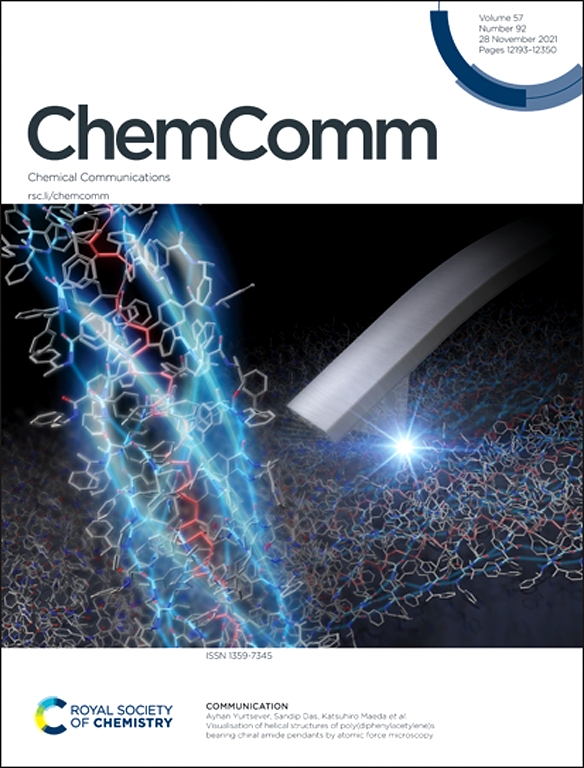Electron-delocalization catalyzers for high performance, low-temperature Li–S batteries†
IF 4.2
2区 化学
Q2 CHEMISTRY, MULTIDISCIPLINARY
引用次数: 0
Abstract
The extremely depressive conversion kinetics of polysulfides due to sluggish Li+ diffusion kinetics remain to be resolved for low-temperature Li–S batteries (LT-LSB). Herein, the strategy for electron-delocalization of nanocatalysts has been designed through introducing oxygen defects on vanadium trioxide that was anchored on a porous carbon network (ODVO@PCN). The reconstructed active sites of the V2+ state tend to interact with sulfur species more easily due to the stronger hybridization between V2+ sites and S sites in sulfur species, allowing enhanced Li+ transformation kinetics across the electrolyte/electrode interface for a fast redox reaction in the low-temperature surrounding. Consequently, at a low temperature of 0 °C, the cell with the ODVO@PCN kinetic promotor exhibits 501 mA h g−1 at 1C and a long life time of up to 400 cycles at 0.5C. Reduced to ultralow −10 °C, the cell still provides a capacity of 706 mA h g−1 and stabilizes a remarkable capacity retention of 85% after 100 cycles.

用于高性能低温锂-S 电池的电子定位催化剂
在低温锂-S 电池(LT-LSB)中,由于 Li+ 扩散动力学迟缓,多硫化物的转化动力学极不稳定,这一问题仍有待解决。在此,通过在锚定于多孔碳网络(ODVO@PCN)的三氧化二钒上引入氧缺陷,设计出了电子定位纳米催化剂。由于 V2+ 位点与硫物种中的 S 位点之间的杂化作用更强,V2+ 状态的重构活性位点更容易与硫物种相互作用,从而增强了 Li+ 在电解质/电极界面上的转化动力学,实现了低温环境下的快速氧化还原反应。因此,在 0 oC 温度下,使用 ODVO@PCN 动力促进剂的电池在 1 C 时可达到 501 mA h g-1,在 0.5 C 时可长期使用 400 次。
本文章由计算机程序翻译,如有差异,请以英文原文为准。
求助全文
约1分钟内获得全文
求助全文
来源期刊

Chemical Communications
化学-化学综合
CiteScore
8.60
自引率
4.10%
发文量
2705
审稿时长
1.4 months
期刊介绍:
ChemComm (Chemical Communications) is renowned as the fastest publisher of articles providing information on new avenues of research, drawn from all the world''s major areas of chemical research.
 求助内容:
求助内容: 应助结果提醒方式:
应助结果提醒方式:


